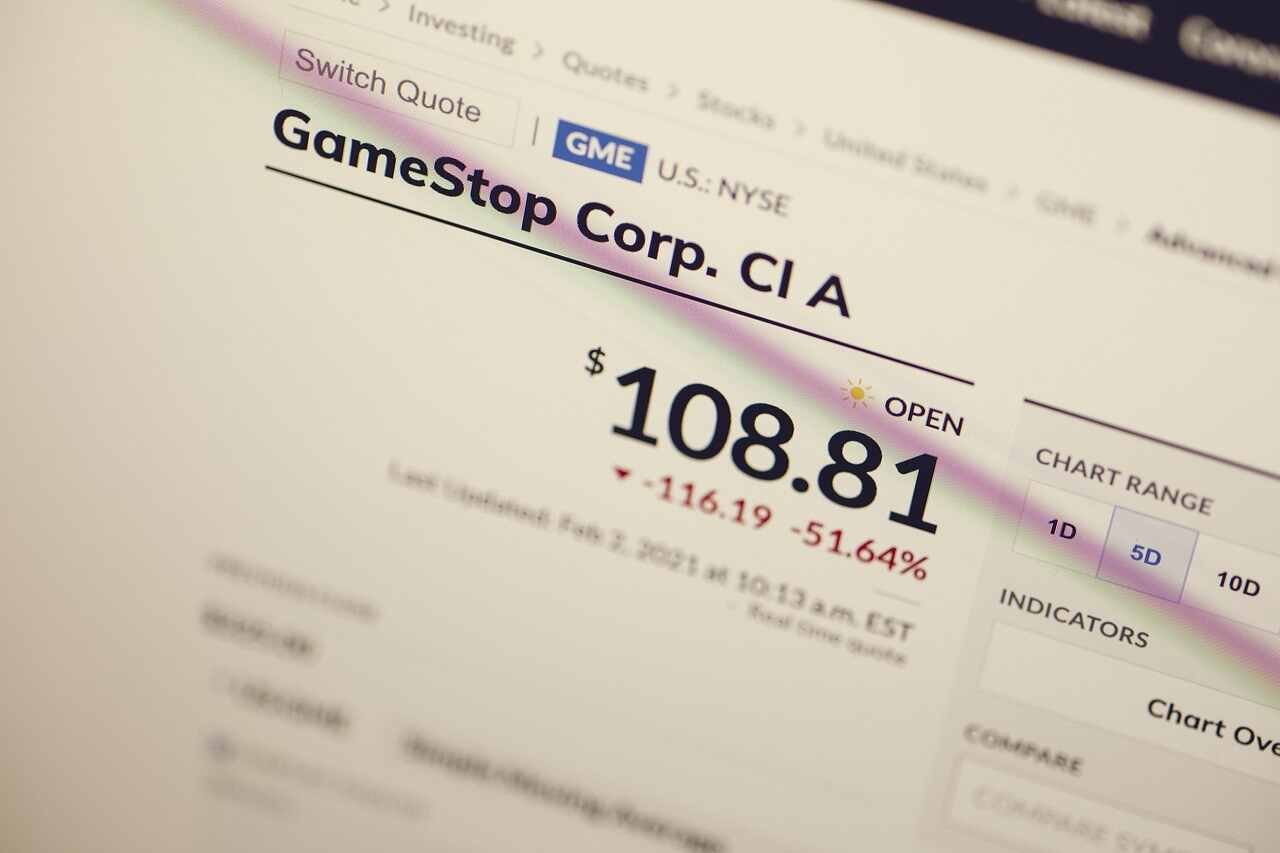Causes and Solutions for Negative Cash Flow
Negative cash flow is a situation in which a company’s cash inflows are less than its cash outflows, resulting in a net loss of cash over a period of time. This can be a serious problem for businesses of all sizes, as it can lead to financial distress, insolvency, and bankruptcy. In this article, we’ll explore the causes and consequences of negative cash flow, as well as some potential solutions for managing this issue.
Causes of Negative Cash Flow
There are many potential causes of negative cash flow, including:
1. Poor cash management
If a company fails to properly manage its cash flow, it may experience negative cash flow as a result of overspending or a lack of cash reserves. Without proper financial planning, a company may find itself short on cash, resulting in deficit cash flow.
2. Wrong data input
Inputting incorrect figures into financial statements can also have a negative impact on cash flow. For instance, if a company overestimates the amount of cash it has available, it may spend more money than it actually has, which can lead to liquidity problems. It is essential to ensure that financial reporting and data input are accurate to maintain a healthy cash flow. It is recommended to have strong internal controls, including multiple checks and balances, to minimize errors and ensure that the data is accurate.
3. Slow sales
If a company’s sales are slower than anticipated, it can lead to disastrous cash flow as expenses continue to mount. For example, a retailer may stock up on inventory in anticipation of strong sales but fail to sell the items, leaving them with excess inventory and less cash on hand.
4. Slow-paying customers
If a company’s customers take a long time to pay their bills, this can create a cash flow problem by reducing the company’s available cash.
5. Overexpansion
If a company expands too quickly, it may experience deficit cash flow as a result of increased expenses without a corresponding increase in revenue. Taking on too much debt, expanding too quickly, or overinvesting in fixed assets can lead to awfulcash flow. For example, a company may invest in a new plant or facility, but fail to generate enough revenue to cover the associated expenses. Similarly, taking on too much debt can lead to high interest payments and make it difficult to meet other financial obligations.
6. Economic conditions
Changes in the market, unexpected inflation, or recessions can affect a company’s cash flow, making it difficult to meet obligations. For example, a sudden increase in the cost of raw materials could impact a company’s ability to produce products and generate revenue, leading to unsatisfactory cash flow.
7. Seasonal fluctuations
Businesses that experience seasonal fluctuations in revenue may struggle with negative cash flow during off-seasons. For example, a ski resort may generate most of its revenue during the winter months but experience deficient cash flow during the summer months when fewer customers visit.
8. Payment delays
Late payments from customers or slow payments from suppliers can impact cash flow, leading to negative balances. For example, if a company has a large number of outstanding invoices that have not been paid, it may struggle to pay its own bills, resulting in poor cash flow.
9. Internal issues
Employee turnover, legal disputes, or production issues can cause unexpected expenses and impact cash flow. For example, a company may be forced to pay legal fees to settle a lawsuit, resulting in a sudden drain on its cash reserves.
10. External factors
Natural disasters, political unrest, or regulatory changes can affect business operations, leading to negative cash flow. For example, a hurricane may damage a company’s facilities, resulting in unplanned expenses and lost revenue. Similarly, changes in government regulations can impact a company’s ability to operate or increase expenses, leading to bad cash flow.
Consequences of Negative Cash Flow
Negative cash flow occurs when a company’s cash outflow is greater than its cash inflow during a given period. In other words, it means the company is spending more money than it is generating. Negative cash flow can have several consequences, both in the short and long term, for businesses.
Deficit cash flow can have serious consequences for a business, including:
1. Inability to pay bills
If a company lacks the cash to pay its bills, it may face legal action, damage to its credit rating, and other serious consequences.
2. Reduced borrowing capacity
If a company has negative cash flow, it may be less likely to be able to obtain loans or credit from lenders.
3. Reduced profitability
It can also reduce a company’s profitability by limiting its ability to invest in growth, research and development, and other important initiatives.
4. Liquidity problems
It can create liquidity problems for a business. If a company is not generating enough cash to meet its obligations, it may have to rely on borrowing or other financing methods to stay afloat. This can lead to increased debt, which can be difficult to manage and can lead to financial distress if not managed properly.
5. Reduced investment capacity
It can also limit a company’s ability to invest in new projects or opportunities. Without sufficient cash, a business may have to forego potential investments or delay them until more cash becomes available.
6. Missed opportunities
Negative cash flow can cause a company to miss out on potential opportunities, such as acquisitions or partnerships. If a business does not have the cash to invest in these opportunities, it may have to pass them up, which could limit its growth potential.
7. Reduced creditworthiness
Negative cash flow can also impact a company’s creditworthiness. If a business is consistently operating with negative cash flow, it may have difficulty obtaining financing or securing favorable terms on loans or credit lines.
Read also: The Job of Credit Manager | How to assess a company’s solvency?
8. Difficulty in meeting obligations
It makes it difficult for a business to meet its obligations, such as paying bills, salaries, and other expenses. This can lead to strained relationships with vendors and employees, which can have long-term impacts on the business.
9. Reduced shareholder confidence
It can also reduce shareholder confidence in a company. If investors see that a business is consistently spending more than it is earning, they may lose faith in the company’s ability to generate returns and may look for opportunities elsewhere.
10. Reduced valuation and potential bankruptcy:
Negative cash flow can impact a company’s valuation, particularly if the negative cash flow is sustained over a long period of time. Potential investors or buyers may be less willing to pay a premium for a business that is not generating sufficient cash.
Potential bankruptcy
Finally, sustained negative cash flow can lead to bankruptcy or insolvency. If a business cannot generate sufficient cash to meet its obligations, it may be forced to file for bankruptcy or cease operations altogether.
Examples of negative cash flow consequences:
- In 2019, WeWork, a coworking space company, had negative cash flow of over $2 billion. This negative cash flow led to significant liquidity problems, and the company was forced to seek additional financing to stay afloat. Ultimately, WeWork’s negative cash flow and other issues led to the company’s failed IPO and a significant drop in valuation.
- Tesla, the electric car company, has had negative cash flow for much of its history. This negative cash flow has limited the company’s ability to invest in new projects and has led to significant debt. However, Tesla’s management has been able to keep investors confident in the company’s long-term prospects, and the company has continued to grow despite the negative cash flow.
- MoviePass, a subscription-based movie ticket service, had negative cash flow for much of its short history. This negative cash flow led to significant liquidity problems, and the company ultimately filed for bankruptcy in 2020.
- Sears, the retail giant, had negative cash flow for many years leading up to its bankruptcy in 2018. The negative cash flow limited the company’s ability to invest in new projects and led to significant debt, ultimately leading to the company’s demise.
In conclusion, negative cash flow can have several consequences for businesses, both in the short and long term
Solutions for Negative Cash Flow
Negative cash flow can be a challenging problem for businesses, but there are several solutions that can help alleviate cash flow issues. Below are some common solutions for negative cash flow:
There are several potential solutions for managing negative cash flow, including:
1. Improving cash management
By closely monitoring cash inflows and outflows, a company can better manage its cash flow and reduce the risk of deficit cash flow.
2. Offering discounts for early payment
By incentivizing customers to pay their bills more quickly, a company can improve its cash flow and reduce the risk of deficit cash flow.
3. Cutting expenses
By reducing expenses, a company can improve its cash flow and reduce the risk of deficit cash flow.
4. Increase revenue
One solution for deficit cash flow is to increase revenue. This can be done by increasing sales or finding new revenue streams. For example, a company may decide to offer new products or services, expand into new markets, or improve its marketing efforts to attract more customers.
5. Reduce expenses
Another solution for deficit cash flow is to reduce expenses. This can be done by cutting unnecessary costs, renegotiating contracts, or finding more cost-effective ways to operate. For instance, a business may decide to outsource certain tasks to reduce labor costs or switch to cheaper suppliers for raw materials.
6. Improve inventory management
Poor inventory management can be a significant cause of negative cash flow. If a company is carrying too much inventory, it can tie up cash and lead to liquidity problems. To solve this, a company can implement better inventory management practices, such as just-in-time inventory or reducing inventory levels.
7. Negotiate payment terms
Negotiating payment terms with suppliers and customers can also help alleviate negative cash flow. A company may ask for extended payment terms from suppliers or offer discounts for early payments from customers to improve its cash flow.
8. Increase prices
Raising prices can help increase revenue and improve cash flow. However, it is essential to consider market demand and competitors’ pricing before implementing price increases.
9. Obtain financing
Obtaining financing can help a business bridge the gap between cash inflows and outflows. This can be done through various means, such as loans, lines of credit, or factoring. However, it is essential to carefully consider the terms and interest rates of any financing options before taking on debt.
10. Improve cash management
Improving cash management practices can help a business optimize its cash flow. This can include more frequent cash flow forecasting, better tracking of cash inflows and outflows, and more efficient billing and collection practices.
Examples of solutions for negative cash flow:
- Apple, the technology company, has often been criticized for its deficit cash flow, despite being highly profitable. To address this issue, the company has implemented several solutions, including renegotiating supplier contracts, increasing prices, and repatriating foreign cash reserves to the United States.
- J.C. Penney, the retail company, faced significant deficit cash flow in 2018, leading to a liquidity crisis. To address this, the company implemented several solutions, including reducing expenses, selling assets, and obtaining additional financing.
- Amazon, the e-commerce giant, has invested heavily in growth over the years, resulting in deficit cash flow for much of its history. To address this issue, the company has implemented several solutions, including increasing revenue through new business lines, negotiating better payment terms with suppliers, and obtaining financing through debt and equity offerings.
- Ford, the automotive company, faced deficit cash flow in 2020 due to the COVID-19 pandemic’s impact on the automotive industry. To address this, the company implemented several solutions, including reducing expenses, increasing prices, and obtaining financing through debt offerings.
In conclusion, deficit cash flow can be a significant challenge for businesses, but there are several solutions available to address the issue. By implementing a combination of revenue and expense management, inventory management, financing, and cash management strategies, businesses can improve their cash flow and achieve long-term financial sustainability.
Using mathematical explanations
There are several solutions to address negative cash flow that can be explained using mathematical examples. Here are a few:
1. Increase Revenue
One way to improve cash flow is to increase revenue. For example, if a company’s revenue is $500,000 and its expenses are $450,000, it has a positive cash flow of $50,000. If the company can increase its revenue by 10%, it will generate an additional $50,000 in revenue, resulting in a positive cash flow of $100,000. Mathematically, this can be represented as:
Previous revenue: $500,000 Increased revenue: $550,000 (500,000 * 1.10) Previous expenses: $450,000 Cash flow before revenue increase: $50,000 ($500,000 – $450,000) Cash flow after revenue increase: $100,000 ($550,000 – $450,000)
2. Reduce Expenses
Another way to improve cash flow is to reduce expenses. For example, if a company’s expenses are $450,000 and it can reduce expenses by 10%, it will save $45,000, resulting in a positive cash flow of $5,000. Mathematically, this can be represented as:
Previous expenses: $450,000 Reduced expenses: $405,000 (450,000 * 0.90) Previous revenue: $500,000 Cash flow before expense reduction: $50,000 ($500,000 – $450,000) Cash flow after expense reduction: $55,000 ($500,000 – $405,000)
3. Improve Inventory Management
Poor inventory management can lead to negative cash flow. For example, if a company has $100,000 tied up in excess inventory and can reduce inventory by 20%, it will free up $20,000, resulting in a positive cash flow of $20,000. Mathematically, this can be represented as:
Previous inventory: $100,000 Reduced inventory: $80,000 (100,000 * 0.80) Cash flow before inventory reduction: -$20,000 (negative cash flow due to excess inventory) Cash flow after inventory reduction: $0 (break-even point)
4. Negotiate Payment Terms
Negotiating payment terms can also help improve cash flow. For example, if a company can negotiate extended payment terms with suppliers from 30 days to 45 days, it will free up $50,000 in cash, resulting in a positive cash flow of $50,000. Mathematically, this can be represented as:
Previous payment terms: 30 days New payment terms: 45 days Total amount owed to suppliers: $500,000 Amount owed in 30 days: $250,000 Amount owed in 45 days: $250,000 Cash flow before payment term negotiation: -$250,000 Cash flow after payment term negotiation: -$200,000
5. Possibility of running out of cash
Let’s say that a small business has monthly cash inflows of $10,000 and monthly cash outflows of $12,000. This means that the business has a negative cash flow of $2,000 per month. If this situation continues, the business will eventually run out of cash and face serious financial consequences. To address this issue, the business might consider cutting expenses, offering discounts for early payment, or seeking out new sources of revenue.
By implementing these solutions, businesses can improve their cash flow and achieve long-term financial sustainability.
Conclusion
This is a serious issue that can have far-reaching consequences for businesses of all sizes. By understanding the causes and consequences of negative cash flow, as well as some potential solutions for managing this issue, business owners can take proactive steps to protect their financial health and ensure long-term success. By closely monitoring cash inflows and outflows, offering incentives for early payment, and cutting expenses as needed, companies can improve their cash flow and reduce the risk of negative cash flow over time.
Sources: PinterPandai, Patriot Software, Investopedia, Velotrade



